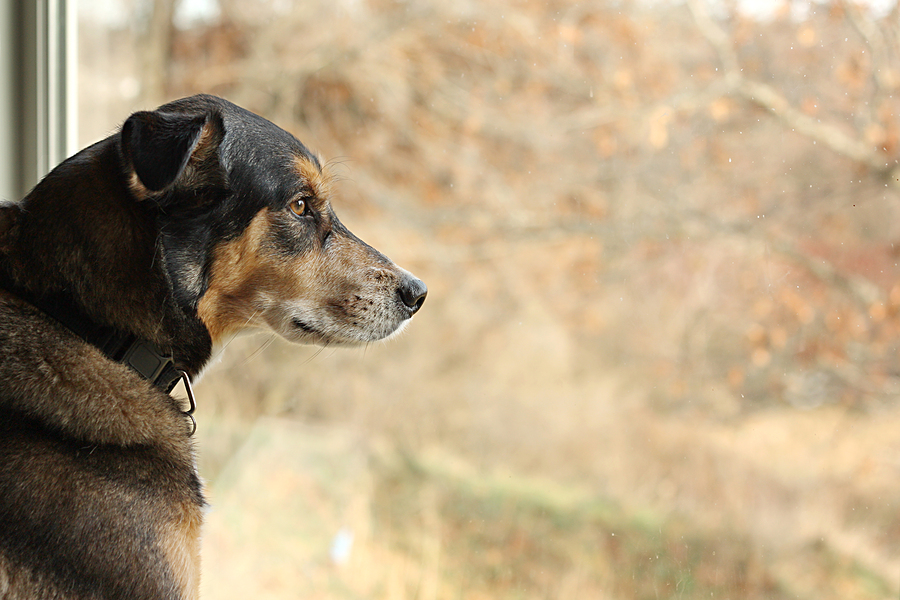
This post may contain affiliate links. We are compensated for referring customers to our affiliate partners.
When it comes to the seasons changing, we all know that humans tend to pack on a little extra weight over the winter months. A lack of exercise and the ability to go outdoors, coupled with the holidays, makes it easy for us humans to get off track. But when it comes to dogs, their bodies are actually programmed to help them survive in harsh conditions. A lot of this is instinct, and we can’t do much about it. The one thing you can do is to adjust your dog’s diet. Let’s take a look at some of the reasons why your dog’s diet may need to change this fall and winter season.
How Do Colder Temperatures Affect Weight?
As the temperatures take a drop, the activity level of a lot of dogs and their owners drops. The colder weather makes it less likely that people are going to go outside and participate in as many activities. If you and your dog are not getting as much physical activity, you probably aren’t burning as many calories as you were during the summer, meaning that your dog won’t need to eat as many calories. If you continue feeding them extra calories, they will end up with unnecessary weight gain which can be bad for your dog’s health. If you have questions about activity level and the amount of calories, it is best to consult your vet and come up with a meal plan that is best for you pet and tailored to the changing weather.
Dogs That Are Housed Outdoors?
Dogs that live outside on a regular basis are a different story. Part of being a mammal is that a dog’s body strives to maintain a certain core body temperature at all times. Shivering helps the body to warm up with movement. But shivering takes up a lot of calories. Fat stores are used up when a dog is shivering, and the need for calories may increase. The dog’s ability to live outside may also be based on the type of dog. Some dog breeds were built for the cold weather while others were not. The ones who are built to live in colder climates may have denser coats and more fat stores in order to plan for this increased calorie burn. Dogs who are normally active in the cold get used to being outside in the cold easier than those who just go outside every once in awhile. Studies have shown that dogs who spend a significant amount of time outside in the cold need 2-3 times more food than dogs who live at moderate temperatures. If you leave your dog outside, please be sure that the temperatures are safe. You should never leave your dog outdoors if there is a dangerous windchill or other dangerously low temperatures.
Altered Metabolism
In the winter, your dog’s metabolism actually changes. If they are living outside or active in the cold, their body switches to burning more fat than glucose in order to keep the body’s core temperature steady. This means that dogs who are more active in the winter, or dogs who are housed outside for a good portion of winter will need a dog food that is higher in fat content than the one that you normally feed them in the spring and summer. Check the nutrition label to see what the percentage of fat actually is in the food and what ingredients are included in the recipe to find the best mix for your dog’s optimum health.
Less Daylight
Less daylight also means less physical activity for dogs and owners alike. Pet owners who get home from work in the evening might find that the daylight is not around anymore, making it really hard to take a walk as usual. Less exercise means less calories consumed, which means less food needed. Also, with the changing light, a dog’s metabolism automatically slows down. A dog’s brain is programmed to notice the diminishing daylight and will automatically adjust as needed. This was meant to help dogs in the wild prepare for a cold, harsh winter. Even if your dog does not live outside in the harsh winter, they still are programmed to have a slower metabolism.
How To Feed Your Dog In Colder Weather
When planning out a meal plan for your pet, you should always know their BCS, or Body Condition Score. This rating takes into consideration all the aspects of your pet’s life. A dog should have an hourglass waist, and ribs that are felt but not seen. If your dog is too thin or too heavy, you may need to adjust the amount of food you are feeding, or the type of food. If you are changing something about your pet’s diet, do it gradually. Some dogs have a sensitive stomach and a big change right away can cause upset. If you notice that your pet is losing or gaining weight during the colder months, you may need to adjust their diet accordingly.
Studies have shown that dogs who are kept at the proper weight can live for up to 2 years longer than dogs who are overweight or underweight. Keeping your dog healthy requires the right nutrition and the right food for the job. Do your research and pick out the best dog food possible. You’ll want to help your furry friend have the best life possible.
